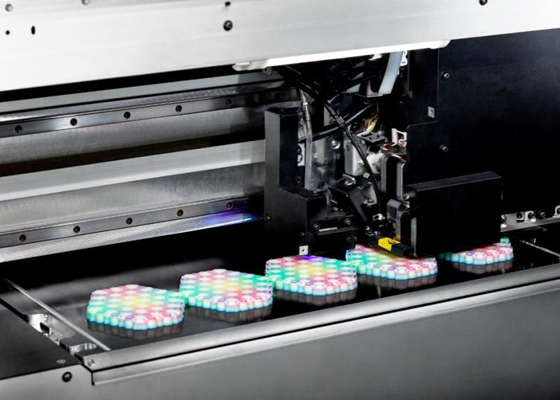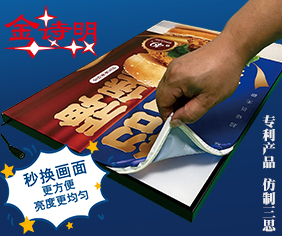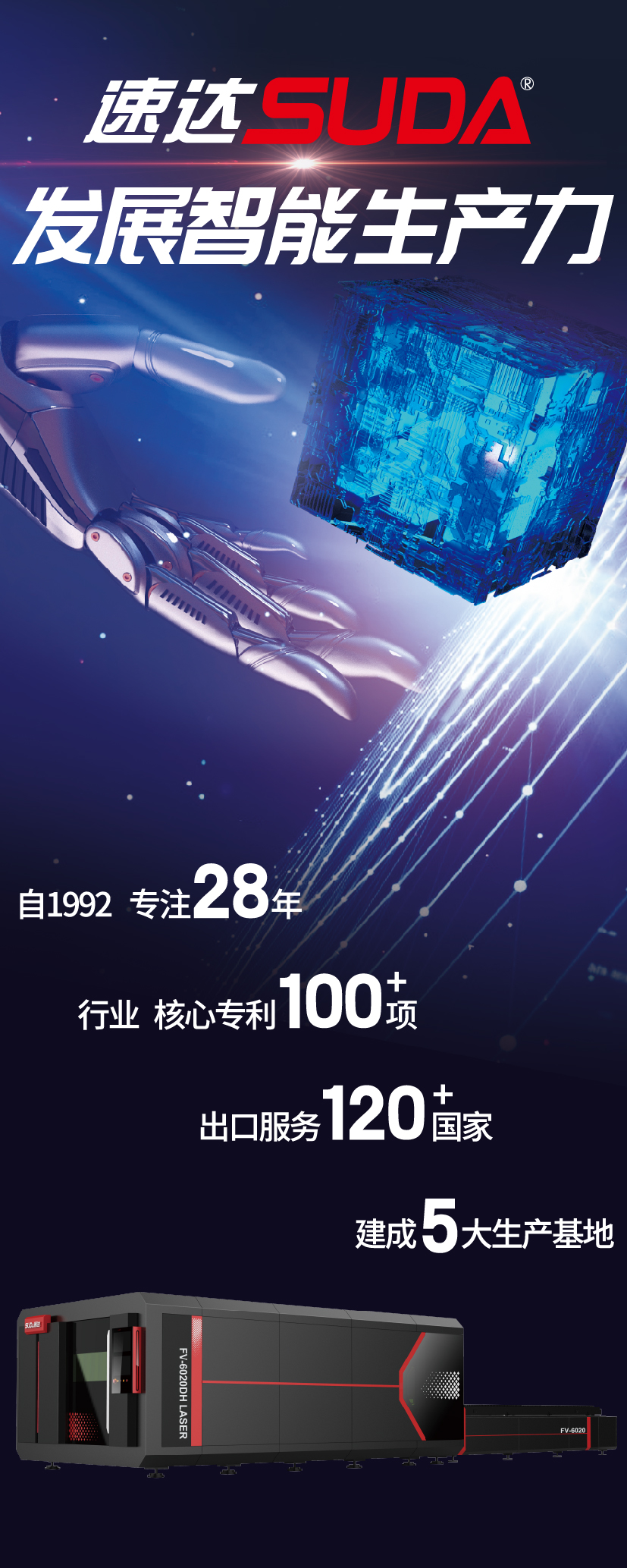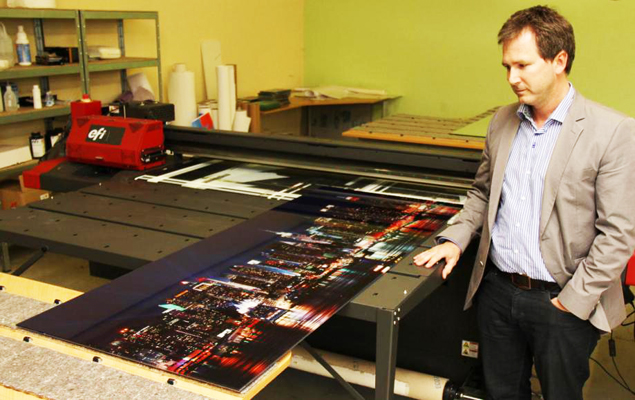
Advances in UV digital printing technology have opened up a world of new opportunities for shops willing to experiment with the various types of media options available to them. One of these areas includes the process of printing onto glass. In the past, imaging onto glass was mainly achieved through painting, etching and screen printing—now the same results are being attained faster and more economically using UV-cure inkjet flatbed printer technology.
UV数字打印技术的进步为愿意拓展新业务的标识制造商带来了新的机会,其中一个领域就包括在玻璃上进行打印。过去,玻璃成像主要通过喷涂、蚀刻和丝网印刷来实现,而现在,使用UV固化喷墨平板打印机技术可以实现更快、更经济的相同结果。
UV glass printing has really caught on in Europe and is beginning to make inroads in the U.S. With new developments in this area, it is now possible to have graphics and many other items vibrantly rendered with glass printing such as mirrors, windows, signage, glassware and awards.
UV玻璃打印在欧洲非常流行,也进一步开始在美国市场取得进展。随着这一领域的发展,应用玻璃打印的范围变得广泛,例如镜子、窗户、标牌、玻璃器皿等,通过打印都可以将图形和物品充满活力。
Sean Roberts, manager of the Global Customer Experience Center, Inkjet Solutions at EFI, says one of the biggest trends with glass printing is being able to get a high-end, high-quality color look.
负责EFI喷墨解决方案的经理Sean Roberts表示:“玻璃打印最大的趋势之一是,能够获得高端、高品质的色彩效果。”
“Glass printing is now standing out as a way to give a premium look to graphics in retail merchandising,” Sean Roberts says. “There are practical benefits that it eliminates the time and extra materials needed to mount printed film to a glass surface. And, you can also get a superior image compared to a mounted film.”
Sean Roberts说:“玻璃打印成为零售商追求图形优质外观的一种选择方式,在说到实际的好处上,它消除了将印刷胶片安装到玻璃表面所需的时间和额外材料,与安装的胶片相比,还可以获得更加出色的图像质量。”
Roberts adds that while retail merchandising is one of the big uses for printed glass, there is also a growing usage in architectural/construction/interior design applications. “In many instances, it presents the opportunity to offer privacy screening or a different, personalized touch to a room design.”
Roberts补充说:“虽然零售商品是玻璃打印的重要应用范围之一,但是,在室内建筑设计的应用中也被证明有越来越多的用途。在很多情况下,它为客房设计提供隐私,或不同的个性化触摸机会。”

Getting Personal
个性化定制
Ken VanHorn, director of marketing and business development at Mimaki USA, says the most prominent trend in UV-LED inkjet printing onto glass is toward personalization and customization. “Technology has made it more cost effective to create short-run items with personalized imagery.”
Mimaki的业务发展总监Ken VanHorn表示:“UV-LED喷墨打印在玻璃上的主要趋势是朝个性化定制方向发展,这种技术使创建具有个性化图像的短期项目更具成本效益。”
He says that where this differs from ceramic-based glass design is that digital inkjet accommodates photographic quality imaging and smooth gradients, with a larger color gamut.
这与陶瓷基玻璃设计不同的地方在于,数字喷墨技术可以满足相片质量的成像,以及平滑渐变的需要,具有更大的色域。
“UV-LED inkjet is also less process-intensive because it does not require any post-print process such as high-heat curing,” VanHorn says. “It’s a less expensive way to create unique pieces in a considerably shorter amount of time.”
VanHorn说:“UV-LED喷墨技术的流程密集程度比较低,它不需要任何印后工艺,如高热固化,在相当短的时间内制作独一无二的作品是一种比较经济的方式。”
VanHorn says the most popular applications he is seeing is with using glass in the awards and recognition industry, as well as personalized items.
VanHorn说他看到最受欢迎的应用就是在奖项和表彰中使用的玻璃,以及个性化产品。
“Print service providers that produce awards, trophy and recognition pieces have been looking into inkjet UV-LED curing technology to create unique and colorful awards. They are no longer limited by laser-etched names and logos with photographic inclusions. Now, the award can be fully made of glass and include smooth color gradient images and logos. The versatility of UV-LED systems can also open the door to many more products that go beyond glass that the award maker wasn’t previously able to create with etching,” he points out.
制作奖杯的打印服务提供商一直在研究喷墨UV-LED固化技术,以创造独特而多彩的奖杯,这些奖杯不再受激光蚀刻和带有照相夹杂物的限制,而是完全由玻璃制成,并包含平滑的色彩渐变图像和徽标。UV-LED系统的多功能性为更多超越玻璃的制品打开了大门,这些制造商之前无法用蚀刻技术创造出这些产品,现在完全可以实现了。
VanHorn says more products are being personalized with photography. Glass Christmas ornaments are being printed with family pictures, company logos and personalized messages. He adds that images are being printed directly onto glass to create modern, low-profile picture frames.
VanHorn说:“以前,更多的产品通过摄影来完成,现在,商品通过个性化定制来备受欢迎,例如,玻璃圣诞饰品印有家庭照片、公司徽标和个性化信息,图像被直接印在玻璃上,以创造出现代、低调的相框。”
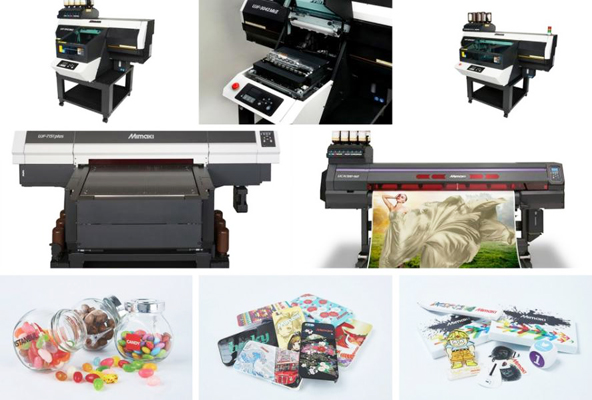
More Decorating Options for Glass
更多的玻璃装饰选项
Glass is one of the most contemporary and desirable building materials used in modern architecture. “Although this traditional material is already found everywhere in the form of windows, glass roofs and glass doors, architects and designers are eager to use this medium more generally for decorative purposes,” says Christopher Howard, vice president of new business development for Durst U.S. He states that the glass decoration performed with the new Rho Vetrocer 250 printer and the ceramic inks offers extremely interesting commercial opportunities.
Durst US新业务发展副总裁Christopher Howard说:“玻璃是现代建筑中,最现代和最理想的建筑材料之一,虽然这种传统材料已经在窗户,玻璃屋顶和玻璃门的任何地方都可以找到,但建筑师和设计师都渴望将这种材料更普遍地用作装饰物品。新型Rho Vetrocer 250打印机和陶瓷油墨进行的玻璃装饰提供了非常多的商业机会。”
“The Rho Vetrocer 250 combines all the advantages from our Rho series – our latest Variodrop-CF print head technology, continuous print, maximum print speed and optimal image quality – with a special transport mechanism that gently guides glass plates up to 2.5 meters wide through the print process,” Howard says. “Between one color and another, the time needed for screen production, machine preparation and dry time has been effectively zeroed. Besides the operational and economic advantages, the shorter response and supply times offer customers a real added value.”
Howard说:“Rho Vetrocer 250结合了我们Rho系列的所有优势——最新的Variodrop-CF打印头技术,连续打印,最高打印速度,最佳图像质量,特殊的传输机制,可轻松引导2.5米宽的玻璃板,在一种颜色和另一种颜色之间进行创作,屏幕制作、机器准备和干燥时间所需的时间已被有效地归零。除了运营和经济优势外,更短的响应时间和供应时间为客户带来了实实在在的附加价值。”
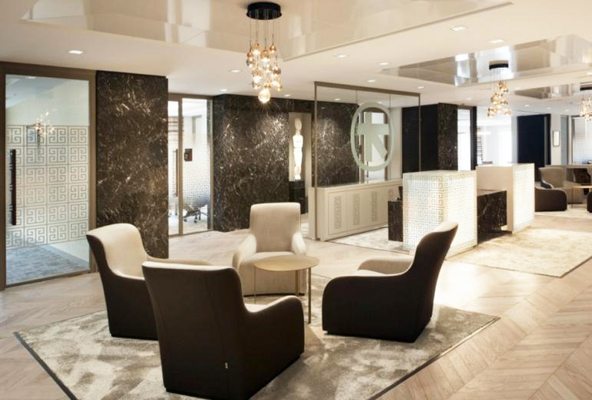
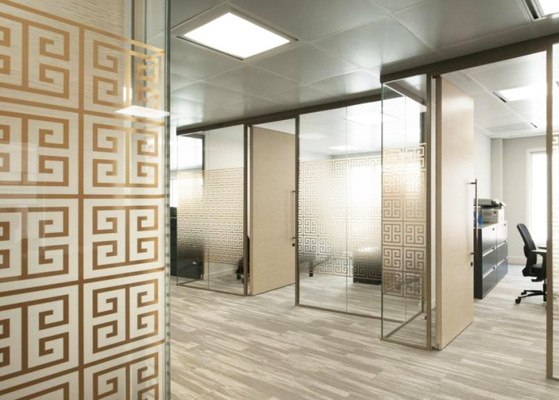
Creativity in a New Medium
新介质的创造力
Artists also making a statement by adding glass printing to their repertoire. Jay Roberts, product manager, UV Printers at Roland DGA, Irvine, California, says that one of the biggest trends he is seeing right now is printing art onto glass.
Roland DGA产品经理Jay Roberts说:“目前,我看到的最大的趋势之一是,将艺术图形打印到玻璃上。”
“This goes hand-in-hand with an increase in interest/demand for interior design and decor that incorporates digital printing,” Jay Roberts says. “Artists have found a new medium printing onto glass. They are printing on dining room tables, coffee tables, shower doors, glass counter tops, glass plates and other items to display and sell their art, combining function with artistic expression. Artists, architects and interior designers have contacted the traditional sign and display companies in order to expand their creativity and, with the developments in UV printing, have found a new ‘canvas’.”
Jay Roberts说:“室内设计和装饰的需求增加了数字打印的增长需求。艺术家们发现了一种新的玻璃打印介质,可在餐桌、淋浴门、玻璃台面、玻璃板和其他物品上进行打印,以展示和出售他们的艺术作品,将功能与艺术表现相结合。艺术家,建筑师和室内设计师已经化为一团来整合这些资源,以扩大他们的创造力,随着UV打印的发展,他们好像找到了一个新的“画布”。”
Jay Roberts says that currently, another one of the most popular applications is printing onto glass to create unique architectural signage for use in the interiors of office buildings and reception areas.
Jay Roberts 说:“目前,最流行的应用是打印到玻璃上,以创建独特的建筑标牌,用于办公楼和内部接待区。”
“End-users reverse print the signage and mount the glass with stand-offs, which allows the ambient light to show through the sign,” Jay Roberts says. “We have seen prints like this up to 8’ long mounted in entryways. The optical quality of glass enhances the reverse print, brightening and adding contrast to the print onto the glass. Another popular application is printing onto etched glass. The etched glass acts as a natural bonding agent for the UV print, providing both stronger durability (adhesion) and adding a subtle ‘white point’ to the normally clear glass.”
Jay Roberts说:“反向打印标牌或在玻璃上安装支架,可以让环境光线通过标牌,玻璃的光学质量增强了反转打印效果,能增亮玻璃上打印的对比度。另一个流行的应用是在蚀刻玻璃上打印,蚀刻的玻璃作为UV打印的天然粘合剂,提供更强的耐用性(粘合性),并为普通透明玻璃添加微妙的点缀效果。”
The Printing Process
打印过程
Roland’s Jay Roberts says printing onto glass using a UV curing printer, such as those offered within their VersaUV series, is truly amazing.
Roland的Jay Roberts表示:“使用UV固化打印机(例如VersaUV系列内提供的打印机)在玻璃上打印出的效果非常棒。”
“Our customers have discovered that, with certain end-user applications, it’s possible to print directly onto glass without the aid of adhesion promoters,” he says. “This depends upon the specific application, however. The level of durability when printing to glass without an adhesion promoter depends heavily upon how the end product will hold up to scratching or handling. If durability is a crucial factor, an adhesion promoter should be used. Artists and interior designers have found that reverse printing onto glass is a highly effective method, without the use of promoters. Printing onto the backside, or ‘second surface printing,’ allows the end product to be protected by the glass itself.”
他还说:“我们的客户发现,在某些应用中,可以直接在玻璃上打印,而不需要助粘剂,然而,这取决于具体的应用。在没有助粘剂的情况下,打印到玻璃上图形的持久性如何,在很大程度上取决于产品的处理,如果对耐久性的要求程度高,还是得使用助粘剂。艺术家和室内设计师发现,在玻璃上反转打印是一种非常有效的方法,不需要使用促进剂,此外,打印到背面或可以让产品受到玻璃本身的保护。”
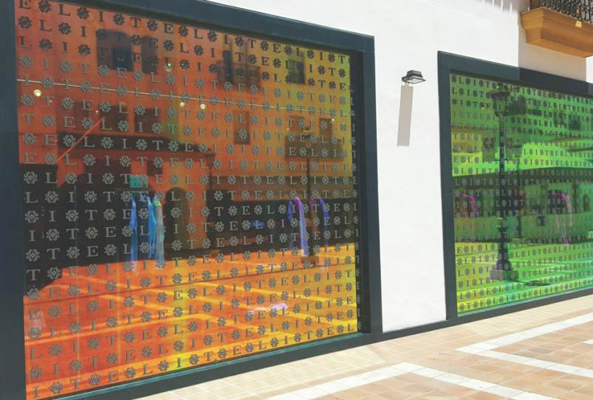
No Coating Required
无需涂覆
Jay Roberts explains that it is possible to print UV successfully onto glass without coating the glass first.
Jay Roberts解释说:“用UV-LED技术打印到玻璃上,不用先涂覆。
“We have seen multiple techniques used,” he says. “One artist told us that he prints to glass with a low-curing lamp level, and then cures the print with another non-printed pass. Another user told us that he likes to ‘double hit’ his glass prints, and then set the prints outside after printing, allowing the natural light to cure the glass print. Double hitting or ‘multiple strikes’ onto the glass builds up the density of the print, creating a richer, deeper image when the light shines through the image of the print.”
Jay Roberts说:“我们已经看到了多种技术,一位用户告诉我们,他用低固化方式打印玻璃,然后用另一张未打印的通行证固化打印品。另一位用户告诉我们,他喜欢双击他的玻璃印花,然后将印花设置在外面,让自然光线能够固化玻璃印花。在玻璃上双击或多次打击可以增强打印件的密度,从而在光线透过打印件图像时,产生更丰富的图像。”
“Glass etching is also a method being used as an alternative to adding adhesion promoters or liquid laminate protection to the glass. The etched glass adds a ‘tooth’ to the printing surface. This tooth allows the UV ink to bond to the glass better and is highly durable. There are several ways to etch the glass,” Jay Roberts explains.
Jay Roberts解释说:“玻璃蚀刻也是一种替代方法,用于在玻璃上添加助粘剂或液体层压保护层。蚀刻的玻璃为打印表面增加了一个齿轮,可使UV油墨更好地结合到玻璃上,并且非常耐用。”
He adds that they have found that users report that they either protect their prints before printing with a glass adhesion promoter, or they protect the prints after printing with a liquid laminate, such as ClearStar ClearShield.
他补充说:“用户报告说,他们在使用玻璃助黏剂进行打印之前,做好保护措施,要么在他们使用ClearStar ClearShield等液体层压材料打印后做好保护措施。”
Using Glass as Your Canvas
使用玻璃作为画布
One of their end users, photographer, artist, print-maker and author Bonny Lhotka, has developed a SuperSauce Solution, which contains about 91 percent isopropyl alcohol, that she uses to transfer images to glass using pigment inkjet prints. “These transfers bond extremely well to the glass,” Lhotka says.
Lhotka说:“他们的终端用户之一,摄影师、艺术家、版画制作人和创作家Bonny Lhotka开发了一种SuperSauce解决方案,使用喷墨打印将图像转印到玻璃上,其中含有约91%的异丙醇,能与玻璃结合的效果非常好。”
Lhotka tested her solution by printing on Roland VersaUV LEF-12, using a process she says is suitable for art and photography imaged onto glass with a UV printer.
Lhotka通过在Roland VersaUV LEF-12上打印,进行玻璃成像艺术来测试她的解决方案。
“I coated the SuperSauce Solution Gloss on low iron tempered glass and let that dry overnight before printing on the LEF-12,” she says. “The UV ink prints and bonds nicely to the glass, and you can’t see the coating after printing. I am continuously impressed by the way my Roland LEF-12 prints onto glass. In this case, I printed the matte varnish over the image and placed it on a mirror to create a truly stunning finished product.”
她说:“我在低铁钢化玻璃上涂SuperSauce Solution Gloss,让它在LEF-12上打印前干燥过夜,UV油墨能很好地粘合到玻璃上,即使在打印后也看不到涂层,这种方式给我留下了深刻的印象,如果我在图像上印上哑光清漆,还能制作出令人惊艳的成品。”
Techniques with UV-LED Technology
采用UV-LED技术
VanHorn agrees that successful printing on glass requires excellent adhesion and bonding capability. In printing with UV-LED technology, he says there are three primary techniques used to improve adhesion.
VanHorn同意在玻璃上打印需要优异的粘合和粘合能力,在使用UV-LED技术进行打印时,他表示有三种主要技术用于改善附着力。
The first way he points out is called wipe-on primer.
他指出,第一种方法叫做擦拭底漆。
“This technique requires a primer that is wiped on to coat the entire surface of the glass, preferably with a lint-free rag,” Van Horn says. “After about 30 seconds of drying time, this technique may leave a cloudy, dull look to the primed surface. Prior to printing, a clean rag can be used to buff out the cloudiness. If the full surface of the glass is going to be printed, buffing the glass completely after drying is not required.”
Van Horn说:“这项技术需要擦拭底漆来覆盖玻璃的整个表面,最好使用不起毛的抹布,在大约30秒的时间后,在底漆表面留下暗淡的外观,在打印之前,可以使用干净的抹布来消除浑浊。如果要打印玻璃的整个表面,则不需要在干燥后进行抛光。”
The second utilizes Mimaki’s PR-100 primer jetted from the printer. “The PR-100 is a ‘printed’ primer that is used as part of the ink configuration for the UJF series UV-LED tabletop flatbed printers, as well as the JFX Series UV-LED (larger) flatbed printers. The advantage to this application method is that it can be precisely placed where it is needed. There is no need to take the extra steps of wiping on or buffing off; however, starting with a clean surface is highly recommended.”
第二种方法是使用从打印机喷出的Mimaki PR-100底漆。“PR-100是一种打印使用的底漆,一般应用于UJF系列UV-LED平板打印机,以及JFX系列UV-LED较大平板打印机油墨配置的一部分。这种应用方法的优点是,它可以精确地放置在需要的地方,不用采取额外的步骤擦拭或磨光,不过,要注意的是,要从清洁表面开始。”
VanHorn calls the third technique plasma treatment.
第三种方法是离子体处理。
“This technique is not unique to digital printing, but it is widely used in digital printing applications,” he says. “Plasma treatment works in two ways. First, it removes any surface impurities such as dust or residue that solvent cleaners may leave behind. At the same time, it creates a surface more conducive to bonding with the ink. The advantage to this compared to a process such as flame treating is that plasma is not as likely to damage or melt the surface of the substrate or coating.” However, plasma treatment equipment is not cheap, with units starting at about $6,000.
他说:“这种技术并不是数字打印所特有的技术,但是,它在数字打印的应用中被广泛使。等离子处理有两种方式,首先,它可以去除溶剂清洁剂可能留下的表面杂质,如灰尘或残留物,同时,它能创造出更有利于与油墨结合的表面。与诸如火焰处理等工艺相比,这种方法的优势在于,等离子体不太可能损坏或熔化基材或涂层的表面,另一个方面,等离子处理设备并不便宜,单位起价约为6000美元。”
Award-Winning Results
获奖结果
VanHorn says one of their innovative end users is Elk Grove Village, Illinois-based Cristaux International, a shop that designs and manufactures a range of awards, trophies and recognition items. Tim Walsh of Cristaux says they use the Mimaki UJF-6042 LED tabletop flatbed printer to personalize a range of items.
VanHorn表示:“他们的终端用户之一是位于伊利诺斯州Elk Grove Village的Cristaux International,是一家设计和制造一系列奖杯和奖品的商店。该店的专业技术人员Tim Walsh说他们使用Mimaki UJF-6042 LED平板打印机来制作一系列个性化物品。”
“We often print on 5” x 7” glass blocks that are 12mm thick,” Walsh says. “We’ll produce breakout awards, and are gearing up to create bamboo frames with custom photos. The printer works great.”
Walsh说:“我们经常使用厚度为12mm的5”x 7“玻璃块进行打印,进行自定义图形的制作,配合合适的打印机使用,效果非常好。“
Other Tips and Techniques
其他技巧
For the most longevity, EFI’s Sean Roberts says there are a few key steps to follow.
EFI的Sean Roberts说:“为了增强玻璃打印制品的使用寿命,有几个关键步骤要遵循。
“For starters, we recommend cotton gloves when you print: bare hands or latex gloves will leave oils that contaminate the glass surface,” Seah Roberts says. “Also, due to its manufacturing process, glass has a clear and a ‘foggy’ side (one is exposed to air during cooling), and you first have to make sure you are printing on the clear side of the glass.”
Seah Roberts说:“对于初学者,我们在打印时建议使用棉手套,裸手或乳胶手套会留下污染玻璃表面的油渍,此外,由于制造工艺的缘故,玻璃有一个雾面,首先必须确保在玻璃的透明一面进行打印。”
He adds that perhaps the biggest difference between other UV printing techniques and specialty glass printing is a post print baking process. “For our UV inkjet printers, EFI recommends baking a printed glass in a conveyor oven at 650 degrees Fahrenheit for 10 minutes. This baking process permanently bonds the glass, primer, and ink for a lasting product.”
他补充说:“也许其他UV打印技术和特种玻璃打印之间的最大区别是印后的烘烤过程,但是,对于我们的UV喷墨打印机,在650华氏度的传送式烘箱中,烘烤打印玻璃制品10分钟即可,这种烘烤过程将玻璃、底漆和油墨永久粘合在一起,以获得持久效果。”
Austrian Glass Vendor Breaking New Ground
奥地利供应商为标识行业开创新局面
Sean Roberts reports one of EFI’s customers in Austria has installed EFI’s H652 UV-curing hybrid printer. The shop, Schrei GmbH, based in the Austrian town of Gars am Kamp, is setting new standards for architecture and interior design by printing directly onto glass. Partners Christian Hable, Manfred Reinisch and Jochen Schinkel were glass vendors who decided to extend their market reach by offering pre-printed glass for a variety of applications.
Sean Roberts报道,EFI在奥地利的客户Schrei GmbH安装了EFI的H652 UV固化混合打印机,Schrei GmbH通过直接在玻璃上打印,为建筑和室内设计设定了新的标准。合伙人Christian Hable,Manfred Reinisch和Jochen Schinkel是玻璃供应商,他们决定通过为各种应用提供预印玻璃来扩大这个新市场。
According to Schinkel, he struck gold with the addition of the EFI H652 printer. “With this UV printing system, we are able to render quality standards that have not yet been attainable on the Austrian market,” he says.
据Schinkel称,随着EFI H652打印机的加入,再通过UV打印系统,他们能够为奥地利市场提供尚未达到的质量标准。
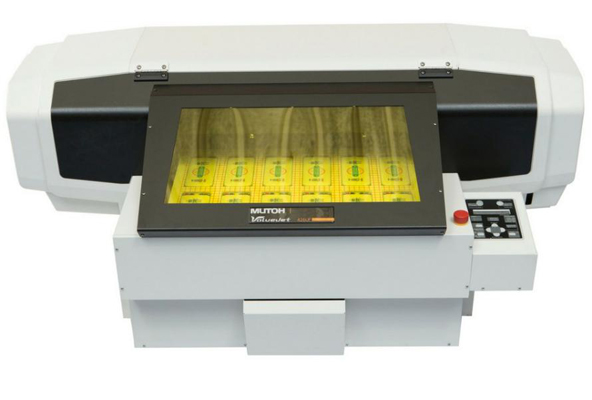
Dazzling Effects on Glass
炫目的玻璃效果
Schinkel reports that the EFI H652 guarantees a resolution of 900 x 900 dpi, and using eight grayscale levels it delivers realistic photo quality directly onto the glass.
EFI H652可以保证900 x 900 dpi的分辨率,并且能使用8个灰度的等级,可以将真实的照片质量直接传输到玻璃上。
“The feedback that we have received from our partners, for example kitchen studios, is simply outstanding,” Schinkel says. “Our clients are impressed with the rich colors and smooth, harmonious color gradients.”
Schinkel说:“我们从合作伙伴那里收到许多反馈,我们的客户对丰富的色彩、光滑度、和谐的色彩渐变印象深刻。”
Apart from kitchen studios, Schrei is currently working for architects, and retailers in particular, who are keen to break into the printed glass market where there is no limit to the number of possible applications. The spectrum of products ranges from kitchen splashbacks, doors, partition walls for offices and restaurants to shower walls, staircase banisters and much more.
目前,Schrei正在为建筑师与零售商工作,他们热衷于进入玻璃打印的市场,产品范围从厨房防溅板、门、办公室,以及餐厅的隔墙到淋浴墙、楼梯栏杆等等。
